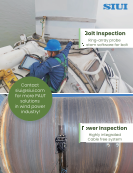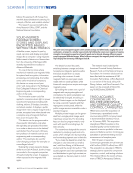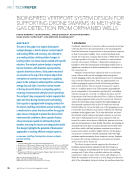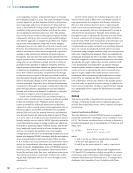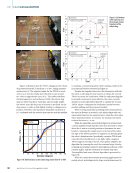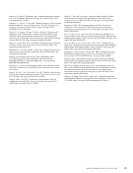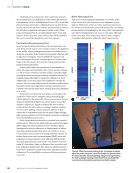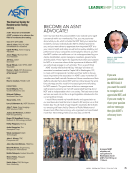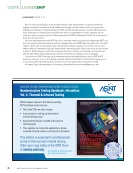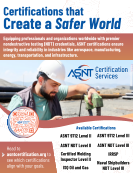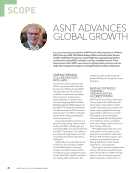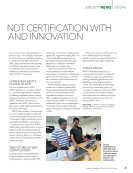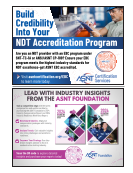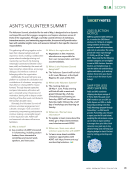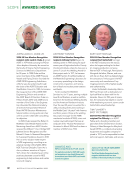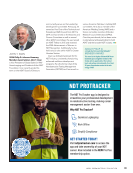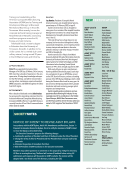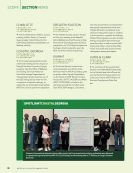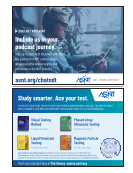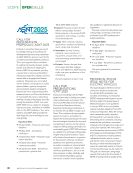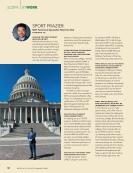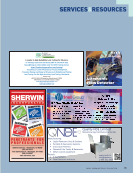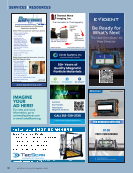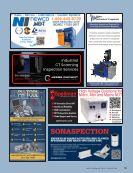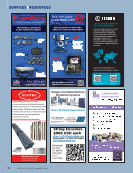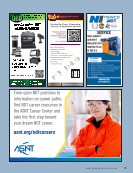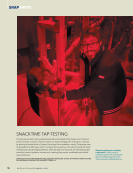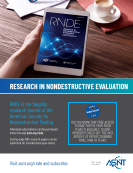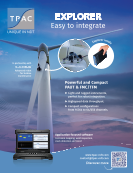ASNT ...CRE ATING
A SAFER WORLD! ®
Magnetic Particle
Testing
third edition
Order 6100
ebook 6100-e
ASNT Level II Study Guides
Available in PT, RT, VT, MT, and UT
Basic Level III
fourth edition
(2024)
Order 10108
ebook 10108-e
ASNT Level III Study Guides
Available in Basic, PT, RT, VT, MT, UT, IR, LT, and ET
Standards
Standards, recommended practices,
and supplementary materials
ASNT Standard:
SNT-TC-1A
2024 edition 2024
EDITION
PERSONNEL QUALIFICATION
AND CERTIFICATION IN
NONDESTRUCTIVE TESTING
SNT-TC-1A
SNT-TC-1A (2024)
Recommended Practice No.
10197 SNTTC1A 2024.indd 1 10197 SNTTC1A 2024.indd 1 4/15/24 8:56 AM 4/15/24 8:56 AM
Order 10197
ebook 10197-e
Order 0144 |ebook 0144-e
Nondestructive
Testing Handbook,
Radiographic
Testing
fourth edition, volume 3
Nondestructive Testing Handbooks
The NDT Handbook covers all major methods of
nondestructive testing, each major method in
its own volume
NDT Handbook Vol. 3:
Radiographic Testing
17 chapters available
NDT Handbook Vol. 4:
Thermal/Infrared Testing
20 chapters available
15 chapters available
NDT Handbook Vol. 1:
Liquid Penetrant Testing
15 chapters available
NDT Handbook Vol. 2:
Leak Testing
NEW! Individual Handbook Chapters
Browse source.asnt.org.
ASNT Questions &Answers Books
Level I, II, and III sample questions for instruction and exam preparation
Order 10127 |ebook 10127-e
ASNT Questions &Answers Book:
Phased Array Ultrasonic Testing
NDT Method References
Resources for learning and reviewing
the fundamentals of NDT methods
Order 2204 |ebook 2204-e
Principles and
Applications of
Liquid Penetrant
Testing
second edition
Liquid Penetrant Testing (PT)
Instructor Package
and Student Package
second edition
Order 1650
Instructor Package
Order 1660
Student Package
Personnel Training Publications (PTP) Classroom Training Series
The PTP Series is available in six methods: PT, MT, UT, ET, RT, and VT. Each volume covers
Level I and II, and includes binder, workbook, and quizzes. Instructor Package includes
answer keys and downloadable PowerPoint® slides.
Introduction
to NDT
Order 1530
ebook 1530-e
PTP Programmed Instruction Series
The PTP PI Series is a self-study resource
for Level I and II candidates
A SAFER WORLD! ®
Magnetic Particle
Testing
third edition
Order 6100
ebook 6100-e
ASNT Level II Study Guides
Available in PT, RT, VT, MT, and UT
Basic Level III
fourth edition
(2024)
Order 10108
ebook 10108-e
ASNT Level III Study Guides
Available in Basic, PT, RT, VT, MT, UT, IR, LT, and ET
Standards
Standards, recommended practices,
and supplementary materials
ASNT Standard:
SNT-TC-1A
2024 edition 2024
EDITION
PERSONNEL QUALIFICATION
AND CERTIFICATION IN
NONDESTRUCTIVE TESTING
SNT-TC-1A
SNT-TC-1A (2024)
Recommended Practice No.
10197 SNTTC1A 2024.indd 1 10197 SNTTC1A 2024.indd 1 4/15/24 8:56 AM 4/15/24 8:56 AM
Order 10197
ebook 10197-e
Order 0144 |ebook 0144-e
Nondestructive
Testing Handbook,
Radiographic
Testing
fourth edition, volume 3
Nondestructive Testing Handbooks
The NDT Handbook covers all major methods of
nondestructive testing, each major method in
its own volume
NDT Handbook Vol. 3:
Radiographic Testing
17 chapters available
NDT Handbook Vol. 4:
Thermal/Infrared Testing
20 chapters available
15 chapters available
NDT Handbook Vol. 1:
Liquid Penetrant Testing
15 chapters available
NDT Handbook Vol. 2:
Leak Testing
NEW! Individual Handbook Chapters
Browse source.asnt.org.
ASNT Questions &Answers Books
Level I, II, and III sample questions for instruction and exam preparation
Order 10127 |ebook 10127-e
ASNT Questions &Answers Book:
Phased Array Ultrasonic Testing
NDT Method References
Resources for learning and reviewing
the fundamentals of NDT methods
Order 2204 |ebook 2204-e
Principles and
Applications of
Liquid Penetrant
Testing
second edition
Liquid Penetrant Testing (PT)
Instructor Package
and Student Package
second edition
Order 1650
Instructor Package
Order 1660
Student Package
Personnel Training Publications (PTP) Classroom Training Series
The PTP Series is available in six methods: PT, MT, UT, ET, RT, and VT. Each volume covers
Level I and II, and includes binder, workbook, and quizzes. Instructor Package includes
answer keys and downloadable PowerPoint® slides.
Introduction
to NDT
Order 1530
ebook 1530-e
PTP Programmed Instruction Series
The PTP PI Series is a self-study resource
for Level I and II candidates





